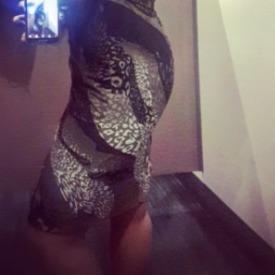Thoughts on TDEE calculators and switching from MFP to TDEE.
Replies
-
Bump for all the great info!0
-
I guess I am one of those people who is still learning. I recently changed from eating MFP's recommendation of 1260 calories to eating at my TDEE - 20% at 1989 calories. I was losing 1-2lbs a week with MFP's way and eating back my exercise calories, but I was starving, drained, and was finding it hard to complete the day. Which is why I started looking into using the TDEE method. I can focus on eating the same calories and adjusting every 5lbs or so. I feel more energized and I am able to complete the day and no longer starving. But I have been gaining about a pound a week using this method, but I have been losing inches...so I am a little confused.
I have a desk job for 8 hours of the day...and I walk/jog 30-40 mins 3 days a week and about 20 mins of 30 day shred 3 times a week with 2 rest days. (One of the days I do both)
I used Scooby's calculator to get my TDEE of 2486 MFP says my daily activity is 2440 which is not too far off.
Does this make sense that I am gaining after switching (2 weeks ago) but losing inches? Do I need to allow 6 weeks for my body to adjust before the lbs start to come off?
Probably means your body for the exercise you do is finally getting enough resources to do something with, whereas before it was a choice, repair muscle used or grow hair and replace skin?
Only glucose stores with water weight add up that fast while losing inches of fat, as well as water retained in muscle for repair from a good strong workout.
Which if you were tired before, maybe wasn't happening well at all.
Need about a months worth of data with no change to workout to decide if you are at right level.
Did you ever compare prior eating levels to what TDEE Deficit method is doing now? You may have increased too much.
Thanks...that's about what I'm thinking as well...I will stick it out and see what happens.
I am eating an average of 250 calories extra then before once I ate back exercise calories.....
Well, and if you have higher BF% than average or expected, and you used the Harris BMR for the TDEE math, you may be another 200 inflated for that reason. Meaning upwards of 500 more than where you were eating before.
That could mean no deficit. Perhaps you wanted minor deficit, but potentially none?0 -
This is just my opinion.
Often times in the forums people will post questions about moving from MFP's exercise calorie model to a TDEE method.
I like the TDEE method a great deal but one thing people tend to do is put their trust into an equation without considering their previous energy intake. This doesn't always end well.
This doesn't mean switching is bad, but often times someone will end up gaining weight because they've just jacked their energy intake upwards by a significant amount. Sometimes I think this is the draw to using a TDEE method. It appears as though you get to eat more. That sounds great, but it's only great if you can still lose weight when you eat at that intake level.
(So for example if you are using MFP and averaging 1600 calories over the past 7 weeks and you're losing 1lb/week, and a TDEE calculator tells you that your TDEE is 2625, and you figure "Hey I'll take TDEE-20% and set my intake to 2100", I'm suggesting this is not likely to end in favorable results.)
We have seen multiple examples in our ETP group where someone makes the switch to a TDEE method and starts gaining weight and many times it's because they are now over-eating. It sounds like I'm bashing the TDEE method, and that's not my intent.
What I'm really getting at, is that your results are a great indicator and if you have accurate data from tracking your food intake and accurate data by tracking your progress over several weeks, you should be using that data to the best of your ability to make conclusions about your intake needs.
I think a more reasonable approach for most people would be to take the previous 4-8 weeks worth of intake data that they have on MFP and average that out. This will tell you your average caloric intake and you can then use your change in weight to at least give you some approximation as to what that intake level does for you as far as change in weight.
It's not going to be perfect of course, but it's certainly valuable data and I am suggesting that it's probably going to be superior to a calculator.
Assuming your results are somewhat reasonable, setting your daily intake to that average value seems like a good idea.
If your results are not reasonable, you can make adjustments upwards or downwards to that average intake to try and produce the desired results. If for some reason you need to start increasing food intake and you want to avoid gaining excessive amounts of fat, you're probably best off gradually increasing intake by slowly adding calories on a weekly basis and monitoring change in weight on the way up. (As an aside, I'd also use this gradual increase method when it comes time to move out of an energy deficit into maintenance or a surplus depending on your goals).
Using your current data and paying attention to the results of that data are going to lead you to a reasonable intake in most situations/for most people.
That's really the end of this rant. This is just my opinion but I'm going to post it here in case it helps anyone.
If not, well then you can just .gif me.
saved to read later!0 -
I'm confused with the TDEE calculators. When they mentioned exercise, is it only cardio? Because I lift weights (stronglifts minus the bench press) about 3 days a week and do HIIT once and steady state cardio once a week. So do I count it as 5 days of exercise/week? Newbie here :P
I know I have to see the mirror to track my progress also but I'm concerned about the intake. I measure every food I consume with a digital scale. If I have to track my maintenance for a week, do I not exercise for that week? My weight fluctuates a lot though, it's getting pretty hard to track.0 -
I'm confused with the TDEE calculators. When they mentioned exercise, is it only cardio? Because I lift weights (stronglifts minus the bench press) about 3 days a week and do HIIT once and steady state cardio once a week. So do I count it as 5 days of exercise/week? Newbie here :P
I know I have to see the mirror to track my progress also but I'm concerned about the intake. I measure every food I consume with a digital scale. If I have to track my maintenance for a week, do I not exercise for that week? My weight fluctuates a lot though, it's getting pretty hard to track.
TDEE calculators include all activity.0 -
So I would put it as 5 days of exercise/week?0
-
So I would put it as 5 days of exercise/week?
Try that and adjust accordingly if you lose/gain. However, your actual results will be a better gauge.0 -
Okay thank you so much!
 0
0 -
This content has been removed.
-
I'm having success maintaining using the TDEE method, but my change in calorie goals was a modest one -- I went from eating 1550 plus my exercise calories using the MFP model to 1750 using TDEE.
I used an online TDEE calculator that I can't find now, but it included a section to break down the amount of time I do all kinds of activities during a 24 hour period in order to calculate an estimated energy expenditure (i.e. 8 hours sleeping, 1.5 hours preparing food, 8 hours desk job, etc.), rather than just using basic categories of sedentary/lightly active/active. Anyone know the site I'm remembering?
Was it this one, i stumbled upon it today
http://www.caloriesperhour.com/index_burn.php0 -
Well said!
here is a gif basket to show my appreciatipn: 0
0 -
I feel like I used to understand TDEE, but now it's all jumbling together. Do net calories ever play a role in eating for TDEE? I thought I read that you should at least net 1,200 every day. But I see people with extreme burns that are netting less than 1,000 & losing, & now I'm reading about starvation mode being a myth, & I'm confused!0
-
This content has been removed.
-
Bump0
-
I did not see any progress in body composition until I switched to this method.
+1 for SideSteel!
Same. TDEE method had me consistently losing fat mass where as MFP had me stalled for two months straight with no changes in inches or weight.0 -
I feel like I used to understand TDEE, but now it's all jumbling together. Do net calories ever play a role in eating for TDEE? I thought I read that you should at least net 1,200 every day. But I see people with extreme burns that are netting less than 1,000 & losing, & now I'm reading about starvation mode being a myth, & I'm confused!
Don't be confused.
1. Starvation mode is a myth, unless you are actually starving. If you are eating 1200 or 1000 or 800 calories, you are NOT starving. But, it's not healthy at some point. But, there is no magic 1200 number. You don't eat 1,100 and all the sudden go into starvation mode. LOL
2. TDEE doesn't have a net because exercise is already calculated into the formula.
If you are getting confused, you don't understand TDEE. TDEE is Total Daily Energy Expenditure. It includes ALL YOUR ACTIVITY for the day INCLUDING exercise. So, it doesn't vary. Most people that get the 1200, usually females, like TDEE better because they get to eat more everyday. With MFP, you eat 1200, unless you exercise, and then you eat more.
Gotcha. That's how I've always understood it, but I've read some things recently that confused me - information overload. Thanks for clearing that up!0 -
Commenting so I can come back and read later0
-
Bump to read later0
-
I feel like I used to understand TDEE, but now it's all jumbling together. Do net calories ever play a role in eating for TDEE? I thought I read that you should at least net 1,200 every day. But I see people with extreme burns that are netting less than 1,000 & losing, & now I'm reading about starvation mode being a myth, & I'm confused!
Don't be confused.
1. Starvation mode is a myth, unless you are actually starving. If you are eating 1200 or 1000 or 800 calories, you are NOT starving. But, it's not healthy at some point. But, there is no magic 1200 number. You don't eat 1,100 and all the sudden go into starvation mode. LOL
2. TDEE doesn't have a net because exercise is already calculated into the formula.
If you are getting confused, you don't understand TDEE. TDEE is Total Daily Energy Expenditure. It includes ALL YOUR ACTIVITY for the day INCLUDING exercise. So, it doesn't vary. Most people that get the 1200, usually females, like TDEE better because they get to eat more everyday. With MFP, you eat 1200, unless you exercise, and then you eat more.
Gotcha. That's how I've always understood it, but I've read some things recently that confused me - information overload. Thanks for clearing that up!
Starvation mode as it is used most often here is a myth - in that you stop losing weight at any level of calories. Starvation mode in the context of adaptive thermogenics (slowing of your metabolism outside what you would expect due to weight loss alone) is not. Dieting causes AT. Extreme dieting makes it worse. It is reversible however. Extreme dieting also risks permanent reduction in your metabolism due to muscle loss.0 -
I haven't read the whole thread and I apologise for that, but I was wondering.
Say I calculate my TDEE without factoring in any fitness whatsoever and I set that as my MFP goal. Then I can eat the calories back without worrying about anything. Is there any flaw in this judgement?
(I've counted calories before, this is the first time I've heard about TDEE)0 -
I haven't read the whole thread and I apologise for that, but I was wondering.
Say I calculate my TDEE without factoring in any fitness whatsoever and I set that as my MFP goal. Then I can eat the calories back without worrying about anything. Is there any flaw in this judgement?
(I've counted calories before, this is the first time I've heard about TDEE)
That is what MFP is doing already.
It factors a non-exercise TDEE based on your selection of activity level.
Then you eat back exercise calories. Just exactly what you said.
The only difference is being aware of selecting a reasonable deficit amount. Match the 20% with block of calories.
MFP Home - Goals - calories eaten in normal daily activities x 0.2 = amount of calorie deficit.
Is it closer to 250, 500, 750?
Then select weight loss goal of 1/2 lb weekly, 1 lb, or 1.5 lb weekly.
Then do exactly what you stated.
But before you log exercise calories, take the same 20% off the total. Because if it had been included in the TDEE, it would have gotten 20% off there.
So just use MFP the way it was designed, except with reasonable weight loss goal instead of max available.0 -
Just curious.....is that Dolly Parton? And who is the other lady?0
-
Haven't read through all the posts to see if someone else as mentioned this but shameless plug for MFP user EvgeniZyntx's awesome Excel macro for importing your MFP logged data to calculate your TDEE from your own results just as Sidesteel suggests here in his post.
http://www.myfitnesspal.com/blog/EvgeniZyntx/view/new-mfp-data-export-tool-major-update-6599270 -
This is so true! I'd been reading so much on here about people eating loads of food and urging others to eat more, that I somehow imagined that I'd been eating more with the TDEE method than with the MFP method. But I usually had MFP set to lose 1/2 lb a week (250 calories). My 20% deficit with the TDEE method was around 350 calories. I was eating 100 calories less, which confused me initially!0
-
Bumping0
-
Thanks for this info!0
-
Thank you so much, I got confused for a while, but all is now well in my little world.0
-
I am new to this thread and I realize it's an older discussion so hopefully this gets seen. I have recently begun strength training and working out every day for the past 3.5 weeks. However, the scale is not moving. MFP tells me to eat 1360 to lose 2lbs a week, but after I've added in my exercise, it gives me an additional amount of calories earned through exercise. I had been sticking to my 1360 number regardless of adding in strength training and cardio, and now I'm beginning to understand I should be upping my calorie intake as well because I'm working out. I'm just unsure exactly how much I should increase it, how much of those calories I should be eating back. The equations are a bit confusing to me so any help would be greatly appreciated. I'm 5'8" and 189 lbs, and I've been following a strength training and cardio program through bodybuilding.com The scale has been stuck at 189 for over 2 weeks now, and while I know some of it is due to increased muscle (my clothes fit a little better and I can tell I've gotten a little smaller) it's still frustrating because I have about 40-50lbs of excess fat I need to get rid of and I don't feel like I'm making progress in that area. Any help or advice would be really great! Thank you!0
-
@Ldecker4 I started out at 183 at 5'9 and was eating about 1700-1900 gross, depending on if I worked out that day, to lose a pound a week and I was working out maybe 4 days a week for an hour at most. I feel like 1360 gross combined with working out everyday is too little, and you need to eat back some of those calories. I found when I ate at 1400/or didn't eat back some/all of my exercise calories I stalled. Trial and error with eating back the calories will help you figure out how many to eat. For me, I found that eating back almost all of my calories (I use a HRM) helped me a lot.
I know its easy to set it to 2 pounds because we all want to lose the weight as quickly as possible. It has taken me 8 months to lose 25 pounds, and I am okay with that. I personally feel that setting it to 1 pound a week is the way to go, and eat back some of those exercise calories!0 -
I am new to this thread and I realize it's an older discussion so hopefully this gets seen. I have recently begun strength training and working out every day for the past 3.5 weeks. However, the scale is not moving. MFP tells me to eat 1360 to lose 2lbs a week, but after I've added in my exercise, it gives me an additional amount of calories earned through exercise. I had been sticking to my 1360 number regardless of adding in strength training and cardio, and now I'm beginning to understand I should be upping my calorie intake as well because I'm working out. I'm just unsure exactly how much I should increase it, how much of those calories I should be eating back. The equations are a bit confusing to me so any help would be greatly appreciated. I'm 5'8" and 189 lbs, and I've been following a strength training and cardio program through bodybuilding.com The scale has been stuck at 189 for over 2 weeks now, and while I know some of it is due to increased muscle (my clothes fit a little better and I can tell I've gotten a little smaller) it's still frustrating because I have about 40-50lbs of excess fat I need to get rid of and I don't feel like I'm making progress in that area. Any help or advice would be really great! Thank you!
How long have you been on a strength training program? If you started recently (such as the past 3-4 weeks) you are very likely to just be retaining fluid. This can cause the scale to stall but it doesn't actually halt fat loss.
As far as exercise calories go, I'd recommend eating about 50% of them back, give or take.
Most importantly though you just need to be observant with results, and adjust as needed.
0
This discussion has been closed.
Categories
- All Categories
- 1.4M Health, Wellness and Goals
- 398.4K Introduce Yourself
- 44.7K Getting Started
- 261K Health and Weight Loss
- 176.4K Food and Nutrition
- 47.7K Recipes
- 233K Fitness and Exercise
- 462 Sleep, Mindfulness and Overall Wellness
- 6.5K Goal: Maintaining Weight
- 8.7K Goal: Gaining Weight and Body Building
- 153.5K Motivation and Support
- 8.4K Challenges
- 1.4K Debate Club
- 96.5K Chit-Chat
- 2.6K Fun and Games
- 4.8K MyFitnessPal Information
- 17 News and Announcements
- 21 MyFitnessPal Academy
- 1.5K Feature Suggestions and Ideas
- 3.2K MyFitnessPal Tech Support Questions






















